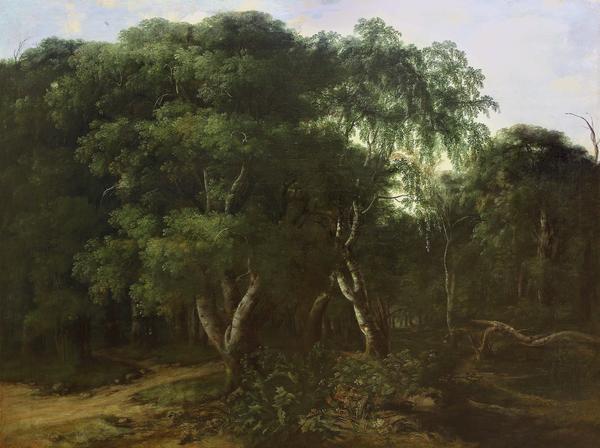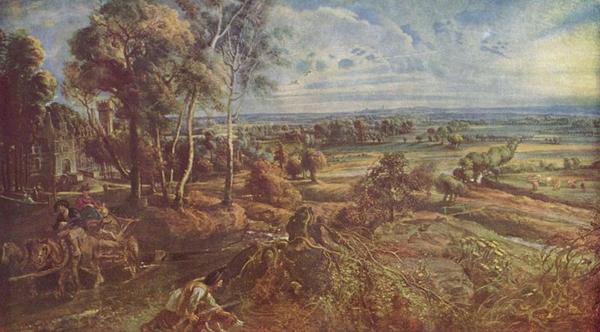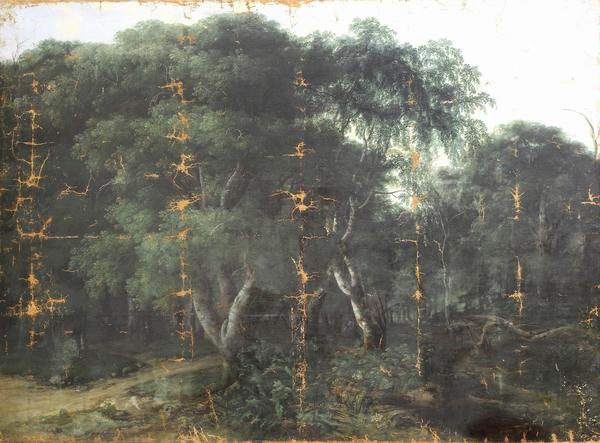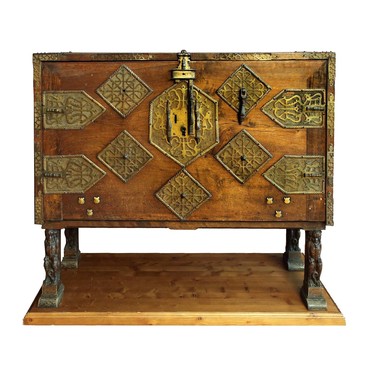Renier Meganck painted Forest Landscape approximately in 1670–1680. From the painting we can see that the master studied real nature: every leaf, every trunk and every shrub look natural. At the same time, Megan did not paint a specific forest but a generalized image of nature.
1 / 3
Forest Landscape
Время создания
1670–1680s
Размер
137x178,4 cm
Техника
Oil on canvas
Коллекция
Выставка
13
Открыть в приложении#1

Renier Meganck
Forest Landscape
#2
#3
The artist organized the space in the painting from the foreground towards the depth. Scholars of the Yaroslavl Museum of Fine Arts noted that he laid paint ‘freely and confidently, revealing a clear evidence of Rubens’s influence.’ Megan painted nature on a large scale where the contrasts between shapes, light and shadow made the landscape look majestic.
#4
Flemish masters of the 17th century painted such landscapes quite often. At that time, the Netherlands split up into Holland and Flanders, after which each of the two lands went its own way. The Flemings remained under the rule of the Spanish king; the clients who commissioned paintings there were aristocrats and the rich Catholic Church. That was the reason why the Baroque style, with its accent on flamboyant, grandiose, pompous art that went well with magnificent mansions, temples and huge castles, was flourishing in Flanders.
#5
Nonetheless, Flanders did grow up on the art traditions of the Netherlands of the 15th -16th centuries, where reality had always been meticulously studied by the artists. Therefore, the Flemish landscapes of the Baroque era are not deprived of their vitality: they glorify true-to-life and tangible greens, ponds with clay shores, tall trees with branches rising to the sky.
#6
Peter Paul Rubens. Autumn Landscape: a View of Het Steen in the Early Morning
#7
In the early 1990s, a group of criminals tried to take the picture abroad illegally, but the artwork was confiscated, and the criminals were tried in St. Petersburg. The painting was used as evidence in the proceedings. When the case was closed, the canvas was transferred to the Yaroslavl Museum of Fine Arts.
#8
After that incident, the painting needed a restoration, as it had been kept folded, and the paint had peeled off along the folds.
#9
Before the restoration.
#10
When the restoration of the landscape began, the restorers found out that it had been painted not in the 19th century, as it was believed at first, but in the 17th century. In the lower right corner, they found the author’s signature and date: R. Meganck 16. Unfortunately, the last two digits could not be restored.
#11
The restorers discovered another interesting detail: two dogs had been initially depicted on a forest path.
#12
Yaroslavl Museum of Fine Arts
читать дальшескрыть
00:00
00:00
1x
Forest Landscape
Время создания
1670–1680s
Размер
137x178,4 cm
Техника
Oil on canvas
Коллекция
Выставка
13
Открыть в приложении
Поделиться





